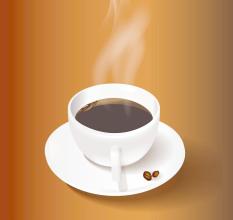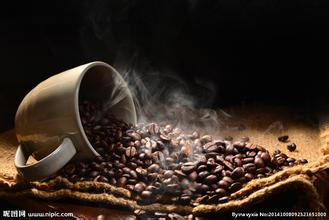How to adjust the coffee bean grinding scale which brand of bean grinder is better
How to adjust the coffee bean grinding scale which brand of bean grinder is better
Determine the direction of adjustment you need (finer or thicker). Make sure there are enough coffee beans in the warehouse, and the valve between the warehouse and the sharpening knife is opened so that the coffee beans can fall smoothly into the grinding area.
Turn on the grinder for 10 seconds and discard the coffee powder (these are coffee powders that have not been adjusted).
Use the coffee powder to make a cup of coffee to ensure the accuracy of the steps of serving, flattening and pressing powder. Test the quality of the coffee and the extraction time. Constantly adjust the dial to make the powder reach a perfect thickness.
Debugging of electronic bean grinder
Different bean grinders have different adjustment dials, so you should check the model of the coffee grinder and read the instructions carefully to determine the direction and strength of the dial. In general, if you keep in the habit of checking the settings of the bean grinder, you only need to make very small adjustments. As long as you move the turntable within 3 mm, you can change the thickness of the powder. Although 3 mm is a very small number, the grinding time of the same coffee beans will change for 3-5 seconds to observe the coffee powder. High-quality coffee powder should be powdery and gravel. If the coffee powder is soft, like flour, it means the powder is fine. On the contrary, if the coffee powder feels tough and rough, it means the powder is too coarse. When the coffee bean enters the grinder, the blade in the grinder will crush the coffee bean into powder.
It is inevitable that ground coffee will produce heat, but the heat will vary depending on the mechanism of grinding beans. Bean grinders grind coffee beans in two ways: one is to grind coffee beans with two grinding plates engraved with shallow grooves, which we call parallel grinders, and most manual bean grinders fall into this category. The other is represented by the shredder, and the coffee beans are cut by two sets of rollers with sharp blades that bite perpendicular to each other, which is the so-called tapered blade grinder.
It is generally believed that slow grinding with a manual parallel bean grinder will not produce heat, in fact, on the contrary, the type of friction with a disc blade is easy to produce heat. On the other hand, the tapered bean grinder can minimize the friction heat produced by grinding coffee powder. The reason is that the tapered blade is ground quickly with a longer blade process, and the tapered blade takes less time and has a lower heating rate at the same thickness.

Important Notice :
前街咖啡 FrontStreet Coffee has moved to new addredd:
FrontStreet Coffee Address: 315,Donghua East Road,GuangZhou
Tel:020 38364473
- Prev

Coffee automatic grinder, the bigger the scale, the finer the powder?-which is better for coffee bean grinder?
The bigger the coffee grinder, the finer the powder?-which coffee bean grinder is better at this time you need to decide whether to re-clean the coffee mill. In order to ensure the quality of coffee, if your debugging range is more than 2 scales, you need to thoroughly clean your bean grinder. Although we don't want to waste coffee, according to our experience, the effect is better after cleaning the bean grinder. [analytical knot
- Next

Commercial semi-automatic coffee machine detailed introduction of brand recommendation
Commercial semi-automatic coffee machine details brand recommendation sometimes encounter some half-bottle of water will say that this term is out of date, now the best semi-automatic coffee machine is variable pressure. Indeed, since 2004, the real variable pressure coffee machine has been born, gradually spread all over the world, and began to enter China in recent years. But the variable pressure coffee machine is not random, it needs to control the pressure.
Related
- What is the Philharmonic pressure? How to use Philharmonic pressure to make delicious coffee
- Why does a hand grinder have more fine powder than an electric grinder?
- In addition to the hot mom, what is the difference between the versions of EK43 | ditting and Mahdi ek43?
- What kind of equipment do you need to make coffee by hand? Introduction to novice starter cooking equipment tools
- Espresso needs to be ground how thick and thin scale entry Italian Coffee Machine Bean Grinder investigation and Grinding course
- How much does it cost to open a small private cafe? How much does it cost to learn coffee? How to operate it?
- The difference between the flavor characteristics of hand-brewed coffee and coffee maker is hand-brewed coffee really better than coffee maker? Can I use a coffee machine to make coffee beans by hand?
- The difference between 01 and 02 of hario v60 filter cup what is the difference between 01 and 02 filter cup opening and cooking flavor
- What's the difference between the smart cup and the French kettle? Which is better, the French kettle or the Smart Cup?
- What's the difference between a smart cup and a V60 filter cup? The difference between the taste of smart cup and hand-brewed coffee

